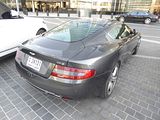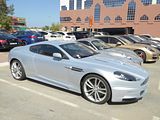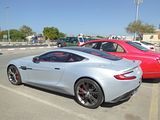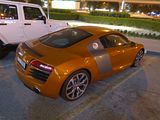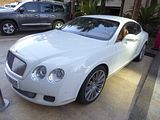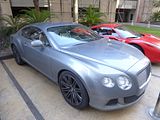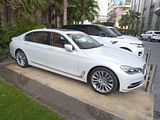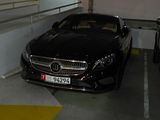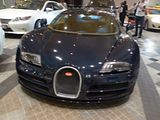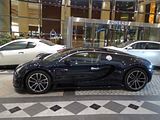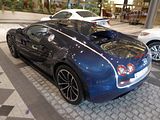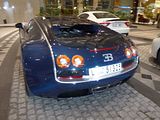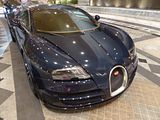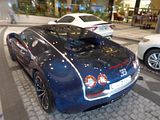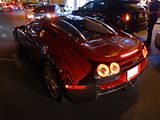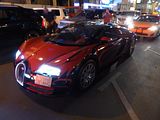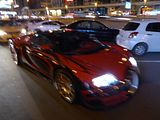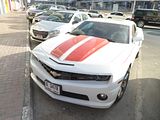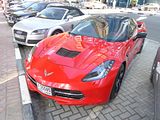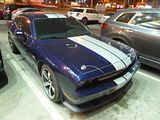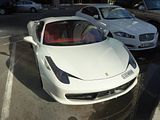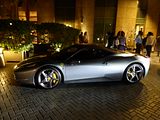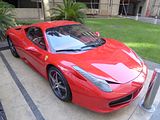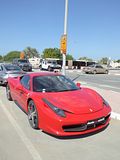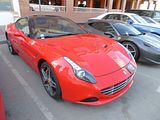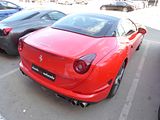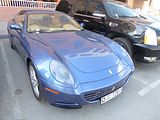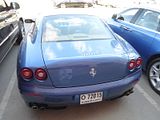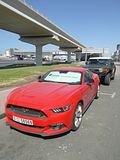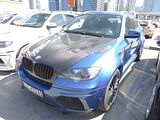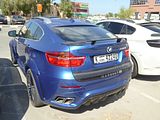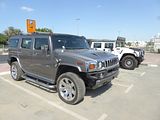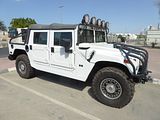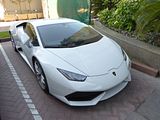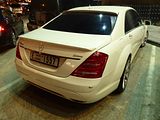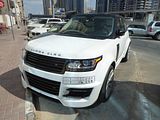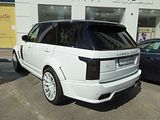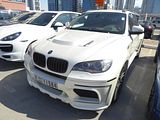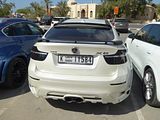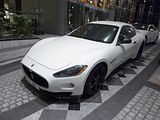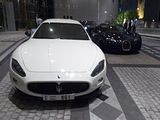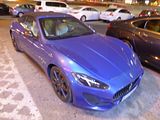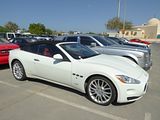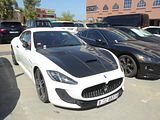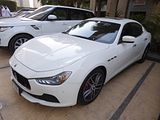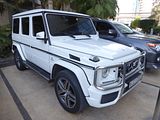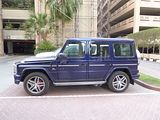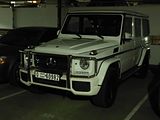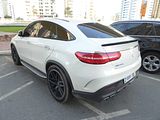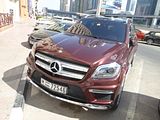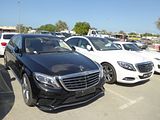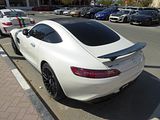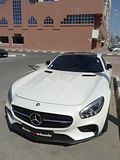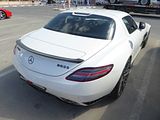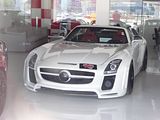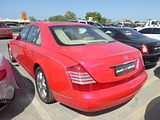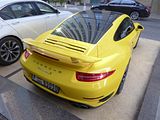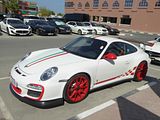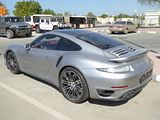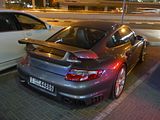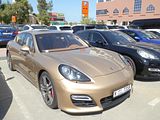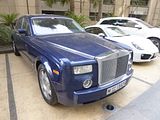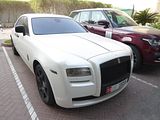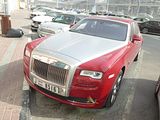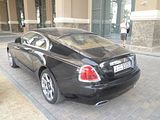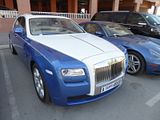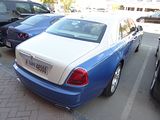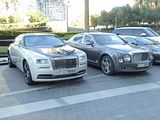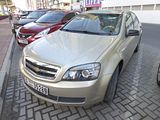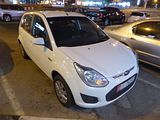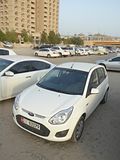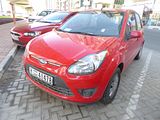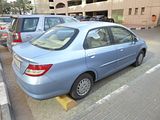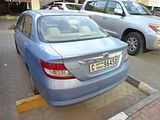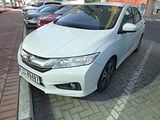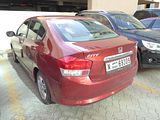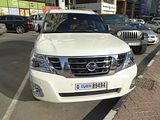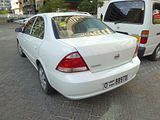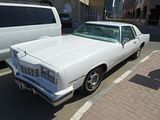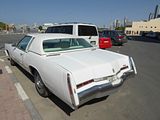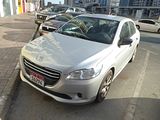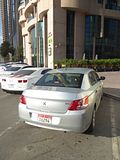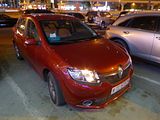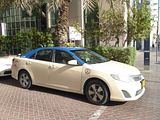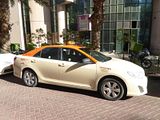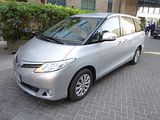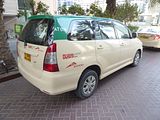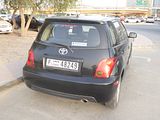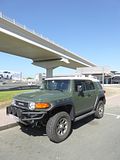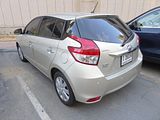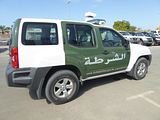It’s not all that long ago when you only really knew about the motoring landscape of the country you were in, certainly if we are talking about a developed country like the UK, or France or Germany, Italy or America. Whilst all of those car producing nations did have significant numbers of cars imports, all of them (if you go back further than 20 years in the case of the UK) were heavily focused on the domestic product. And so, when the car enthusiast went to another country, there was lots that was unfamiliar, either in terms of the number of models that were seen compared to the streets at home, or simply cars that they had never heard of, read about let alone seen. That’s all changed with the globalisation of the world, and the reach of the internet, of course, but even so, despite being able to research and find information on any car you’ve heard of, and probably stumbling across a good few that you’ve not, just by going online and using Mr Google, there’s still no substitute for going to that other country, and simply looking at the cars that pass you on the street and that you see parked up to find out about motoring life in a foreign land. I had lots of expectations as to what I was going to see on the streets of Dubai, of course, and some of them were not unfounded. Here’s a taster, based on a recent trip of what caught my eye and was in range of the camera.
THE EXOTICS
There are plenty of reports bot about how important the Gulf States are for the sale of new super- and hypercars and also tales of how many of these cars end up abandoned on the street when the owners lose interest. We did not see any evidence of that, but we did see plenty of exotic cars. Some were just on the street, or parked up, and there were always plenty of them parked up at our hotel in the evening, the owners no doubt having come to visit the hotel bar, hotels being the sole source of alcohol in this Emirate. We spotted a number of exotic car dealerships that were very close to Metro stations and so had a plan to go and have a look at some of them whilst we were there. One piece of planning we did not quite get right was that the only day free to do this was Friday, which is like a Sunday in Europe. Almost everything is closed, at least until late morning when the Metro starts running, so this plan did not quite work, and we found that getting photos through showroom windows was a futile exercise given the reflections that would have spoiled the pictures. One dealer did have plenty of cars parked up outside, though, and these do augment what we saw just “out and about”.
ASTON MARTIN
DB9 and Vanquish
AUDI
R8
BENTLEY
Continental GT Coupe
BMW
This latest 7 Series was parked in the valet area of the car park at our hotel. This appeared to be a fairly standard spec, and it would seem that BMW are going down the same route as dread rival Mercedes, in applying extraneous tinsel to the car, if you look at the chrome strips in various places on the car – maybe appropriate for the Gulf and Russian markets, but not what your traditional German or UK executive buyer would normally think of as tasteful.
BRABUS
This S Coupe-based model was parked up in a rather dingy part of our hotel car park, hence the rather dark photo. The Brabus badging on the front left us in no doubt, though that this was a bit more special even than the regular car.
B63S SLS GT
BUGATTI
We saw two Veyron cars out in the wild. The first was parked up at the Conrad Hotel, and we spotted it as we walked over the footbridge spanning the main road, as we came out of the Auto Show. All thoughts of trying to find food were abandoned for a while, as we made a short detour to take a closer look. There was still heat pouring off the car, so it would seem likely that it had only just arrived.
The second one, a L’Or Rouge as we were walking up the road in search of dinner. It was coming down the side street that is parallel with the main road. As soon we spotted it, we turned on our heels and ran after it. Luckily a combination of speed humps and cars pulling out of the parking places meant we did not have to go far, and the car was paused, waiting a little anxiously as a Toyota Camry backed out of a space, causing not a little concern by the driver that the Camry guy would back into him. The car was on Saudi plates. We got a big thumbs up from the driver when he saw us taking photos. Apologies that they are dark and not perfectly focused.
CHEVROLET
Camaro SS
Corvette ZO6
DODGE
The SRT392 is not the top model in the Challenger range, that honour going to the 707 bhp HellCat, but it is still a pretty potent beast, sporting a 485bhp 6.4 litre hemi-engined V8 under the bonnet. It also comes with an adaptive suspension, six-piston Brembo brake calipers (instead of four-piston), wider tyres, leather and Alcantara seats, a heated steering wheel, a louder stereo and HID headlights. I am big fan of the Challenger, and this one would appeal even more than the less potent 5.7 litre R/T model that I drove a while back.
Dodge sell an SRT 392 version of the four door Charger as well, and it has the same 485 bhp 6.4 litre engine under the bonnet, which must make it very brisk. The Charger is probably my favourite all-American saloon, impressive even in entry level 3.6 litre V6 guise. It must be an absolute belter in this guise.
FERRARI
The 458 Italia might not be as evident on the streets of London like its predecessor was, but out here, there were loads of them. We also found a number of California models.
There were lots of Ferrari models at the dealer we visited. There was a LaFerrari inside, which completely defied any efforts to get a picture that was not completely ruined by reflections. Outside we found 458 Italia and Spider, California T and a 612 Scaglietti,
FORD
Europe has had a long wait for its version of the latest Mustang, with the cars scheduled to go on sale before the end of the year. Judging by the number of cars we saw here, almost all of which, predictably were the 5.0 V8 version, they have been on sale in the Gulf for a little while.
HAMANN
This Hamann modified X6 was parked up outside the dealer we visited. If you don’t think the modifications are quite right, then read on to see another of the after-market customisations.
HUMMER
H2 and H1
LAMBORGHINI
We found this Huracan parked up around the back of our hotel and it seemed to be there most evenings and most mornings. It did move around the car park and there were occasions when it was not there, though. There were lots of other Huracan models that we saw out on the road.
LAND ROVER
There were plenty of high end Range Rover and Range Rover Sport models, which, predictably all seemed to be V8 petrol powered rather than the Diesel ones which Europeans tend to buy.
LORINSER
This W221 S Class Mercedes had been modified by Lorinser. Like many of the after market tuners and customisers, there is a long list of upgrades that you can ask Lorinser to apply to your Mercedes, ranging from mechanical upgrades to carbon fibre additions and new trim inside. This one appeared quite modest by the standards of what is available for those who want to tick every box.
LUMMA
Range Rover CLR R
MANSORY
Here is Mansory’s version of the X6. Compare it with the Hamann version and decide which you prefer. Neither is a valid option, of course and would be the answer I would give!
MASERATI
Maserati clearly sells plenty of cars here and we saw a number of GranTurismo and GranCabrio models at the hotel, and on the street.
This GranTurismo MC Stradale was parked up outside the dealer we visited. The carbon fibre bonnet is a feature of this version, and every time I see it, I can’t help but concluding that it does not suit the car at all.
Much more to my taste was this Ghibli which was parked in the valet area of our hotel when we got back there one evening.
MERCEDES
If you had any doubts as to whether it is viable for Mercedes to keep the venerable G Wagen in production, then you just need to come to Dubai. There are loads of them. Not only that. but nearly every one we saw was an AMG version. Even the base G350CDi in Europe or G550 in America is eye-wateringly expensive, but the G63 AMG versions are anything up to 50% more money. Here’s the reason why Mercedes continue to offer it.
There were lots and lots of other AMG models that we saw, too. The GLE63 Coupe, which I think is particularly vulgar did not look so out of place here, and there were also GL63 AMG models that were parked up on the street. Even the S Class models were frequently AM|G models as opposed to the S350CDi ones that we tend to see in Europe.
AMG GT-S
AMG SLS and Black Series
I don’t recall ever seeing one of these Maybach cars in red before, and frankly, I can see why. The paintwork on this appeared to have gone a bit on the pink side, too.
PORSCHE
Not surprisingly there were lots of high end 991 models to be seen. This 991 model Turbo S was parked up at our hotel one evening.
We found this 997 GT3, and 991 outside the dealer we visited.
Also seen was a 996 GT2
Panamera
ROLLS ROYCE
There were plenty of current Rolls Royces about: Phantom, Ghost and Wraith
THE MORE AFFORDABLE
The day that was spend at the Dubai Auto Show, where most, but not quite all the marques who sell to this market were present, should have given a clue to the car landscape to expect out on the streets of Dubai and beyond. In essence, there is a mix of those models familiar to Europeans combined some US market cars. There were a few models which fitted neither of these categories. though, and those are some of the ones featured in this section of the report. One thing did strike me, surveying the cars over the five days of the visit: there are barely any “old” cars on the street. And by “old”, I mean more than about 7 or 8 years old. I still don’t know the explanation for this. Cars are unlikely to be worn out by then, so either they all leave the country, finding new homes elsewhere (quite likely) or, it could be simply that there were not that many cars a few years ago, as Dubai has grown at such a phenomenal rate in the last decade or so, that whereas the market now is for around 430,000 cars a year across the whole of UAE, if you were to go back 10 years, it was probably a lot less. Needless to say, thanks to the hot climate, light coloured cars are very popular here, with white being very dominant. It makes quite a change from the sea of 50 Shades of Grey that you see on the streets of Britain! Here then, are some cars with which you may not be familiar that are simply the ones I was able to photograph.
CHEVROLET
To most car-knowledgeable people, Caprice is the name given to a large Chevrolet model which was once popular in the US, but which was phased out in 1996 when the last of the line, a car looking rather like it had too large a body on rather small wheels, was deleted. More recently, the Caprice name has been revived for a rear wheel drive model that is sold only to fleets, primarily for Police duty. It’s actually an import from Australia, and that gives a clue to the Caprice that is offered here. GM dusted off the Caprice name in 1999 and applied it to Holden Statesman/Caprice models built by its Australian subsidiary, Holden. Hitherto, all Holdens had been designed only for right hand drive, to support the local Australian market, but the WH series Statesman/Caprice was engineered to support both left- and right-hand drive, enabling it to be sold in export markets such as the Middle East, where left hand drive is required. The same was true for the related short-wheelbase Holden VT Commodore, whose left-hand drive version became the Chevrolet Lumina in the Middle East. The Middle Eastern Caprice came out in 2000 in four versions, base LS, standard mid-range LTZ, a sporty SS and the range topper Royale which followed late, in 2002. The differences between the models were mostly in equipment levels and slight styling tweaks. The base LS came with a 3.8 litre V6 engine; the LTZ came as standard with a 295 hp 5.7 litre Gen III V8, and the SS and Royale came with a 325 hp version of the same engine. In 2003, Holden launched a revised and facelifted Statesman and Caprice, which was reflected in their Middle Eastern versions for the 2004 model year. The new models sported new front and rear ends and completely redesigned interior. The engines carried over unchanged. In November 2006, a completely redesigned Caprice lineup was launched, again based on the recently introduced Holden WM Statesman/Caprice. The new Caprice lineup once again comprised LS, LTZ, SS and Royale, all sporting the new 360 hp L98 6.0 litre V8 engine. The LS, LTZ, and Royale all share the front bumper as the Holden WM Statesman while the LS lacks the Statesman’s trademark foglights which are seen on the LTZ and Royale while the SS gained the Caprice’s front bumper and foglamps minus the parking sensors. The LS also gained the VE Commodore Omega’s interior and rims, while the LTZ gained the rims from the VE Commodore V based on the Commodore Omega, and the Statesman’s interior minus the headrests with the LCD screens and DVD player, while the Royale gained the Statesman’s rims, and the Statesman’s interior with the LCD screens in the head rests and DVD player from the Holden versions, the grille from the Daewoo Veritas, bonnet ornament similar to the one that the appeared on the 4th and 5th generation models, and the SS gained the same rims as the WM Caprice, interior from the Caprice minus the headrests with the LCD screens and DVD player, colour coded version of the grille’s trim, and the optional lip spoiler from the WM Caprice. The Caprice was updated for 2011 to include the features that Holden included on the Australian market car. The Caprice lettering engraved on the chrome trim which was on the car from 2000 until 2010 on the trim was dropped and replaced by a Caprice nameplate badge which is below the chrome trim on the left end of the rear panel on the boot. The V6 engines were dropped in the LS and LTZ leaving the V8 as the standard engine while the LS got the rims that were previously on the LTZ from 2007-2010 as well as previously seen on the VE Commodore V based on the Omega Series I model, while the LTZ and Royale got the rims seen on the VE Commodore Calais V Series II and the 2010-2011 Chevrolet Omega Fittipaldi Edition and the SS now gained the rims that the WM Caprice V Series II had. The LS, LTZ, and Royale still retained the Statesman front bumper, while the SS still retained the Caprice/Caprice V front bumper. The Royale also gains an rear vision camera in the chrome trim on the trunk which is absent on the LS, LTZ, and SS like the Holden Caprice and Caprice V. For the 2013 model year for the Caprice SS the Impala badge on the trunk was dropped in favour of the traditional Chevrolet bowtie. The Caprice was updated again based on the Holden WN Caprice. The Caprice LS and LTZ still retain the front bumper as the WM Statesman while the Royale now gets the same front bumper as seen on the WM/WN Caprice and the Caprice SS and the rims that were previously on the 2011-2013 Caprice SS, the 2010-2013 WM Caprice V, and currently the WN Caprice LPG model, and the Holden Commodore (VF) Calais’s interior just like the Holden models. The SS now gained the rear vision camera which was previously only available on the Caprice Royale which was still not available on the Caprice LS or LTZ, the same interior updates the WN Caprice and Caprice Royale, and also got the same rims as on the WN Caprice V while the LS, LTZ and SS gained new rims. The Holden-sourced Chevrolet Caprice in LS trim is used in Middle East police forces in the United Arab Emirates such as the Abu Dhabi Police, Royal Oman Police and Dubai Police Force. In 2012 after the Libyan Civil War ended the Abu Dhabi Police donated 100 of its Caprice LS police cars to Libya along with uniforms making it the only country in the continent of Africa to have the Holden sourced Caprices in service. There were quite a few Caprices around, this being a relatively cheap large and roomy family car for those who still want a traditional saloon and not some form of SUV.
FORD
See this car from the rear, and you would think you were looking at a previous generation Fiesta, but catch a view of the front, and you would probably scratch your head wondering quite what it was. The answer is a Ford Figo. The Figo was unveiled in Delhi in September 2009. It is based on the same small car platform used for the Ford Fiesta and indeed resembles the Fiesta, but with revised front and rear treatments. It was introduced to sit below the Fiesta Classic which Ford also sells in India. The name “Figo” is a colloquial Italian word meaning “cool”. Sales started in the Indian market in March 2010, and the car prove quite popular. Ford have offered the Figo in a number of markets, including South Africa, Latin America and the Middle East. A facelifted model of the Figo was launched in October 2012, with a larger hexagonal grill and redesigned head and tail lamps. In the Middle East, the Figo is available with a 1.4 lire petrol engine with a manual gearbox or a 1.6 litre wiith an automatic gearbox, and it is sold in Trend and Ambiente models. A new Figo, which was on display at the Auto Show, is expected to form the basis of the model Ford will sell in Europe as the next generation Ka.
HONDA
Honda first used the name Honda City in 1981. Positioned beneath the Civic in Honda’s range, this was a tiny car, designed, as the name would suggest primarily for city use. The model was exported to the UK, where it was rebranded the Jazz, as City was trademarked to Opel at the time, and it sold in reasonable numbers, though I cannot recall when I last saw one. A second generation was launched in 1986, and this one did not reach UK shores. It looked much more like a shrunken Civic, but was still very much a small city car. Production continued until 1994. There was then a gap, before the name was revived in 1996 for use on a series of compact four-door saloons aimed primarily at developing markets, initially mainly sold in Asia outside of Japan but later also in Latin America and Australia. The third generation City looked rather like an amalgam of the Honda Domani (known to Europeans as the Concerto) and the Civic Saloon of the time. In 2002, the fourth generation model was produced, and there were a number of these on the streets of Dubai. The fourth generation City made its world debut at the Thailand International Motor Expo in November 2002, the country where it would be manufactured. Sales of this model extended to reach Japan, where the car was christened the Fit Aria. Fit, because the front end of the car is like the Fit hatchback (known as the Jazz to Europeans), and Aria as a continuation of the musical naming theme which had already given us the Honda Prelude, the Honda Accord, the Honda Ballade, the Honda Quintet, and the Honda Concerto. In the People’s Republic of China, the model was named Fit Saloon where it was sold from September 2003 to December 2008. Compared to its predecessor, it retained similar exterior dimensions, but increased significantly in interior space thus bumping up the City to the compact car size segment. The fourth generation City was initially launched with a twin-spark, lean burn ‘i-DSI’ engine producing 88ps that was primarily designed to provide outstanding fuel economy. The VTEC version of the Honda city was launched later. The VTEC trim of the Honda city is offered with 15-inch alloy wheels compared to the 14-inch offered in the i-DSI and the rear brakes are solid discs on the VTEC variant instead of drums in the i-DSI. Also, the VTEC model uses a 7-speed Multimatic CVT automatic transmission. In September 2005, a face-lifted version of the City was launched in Thailand, Malaysia in October 2005, and Indonesia in November 2005. In Thailand it was known as the City ZX. The most significant changes were a new exterior (new front grille, new headlamps, new fog lights, new taillights and bumpers). The front end was extended forward by 65 mm while the rear was extended by 15 mm. Both the i-DSI and VTEC trim levels had 15-inch alloy wheels as standard equipment. Interior changes were minor but it included an armrest for the driver and additional map lights. The interior colour tone of the VTEC variant became black.
The fifth generation Honda City was once again unveiled in Bangkok, in September 2008 followed by launches in India, Pakistan, Malaysia, Indonesia, Philippines, Singapore and China in the following months. It would be manufactured in number of locations including Turkey, Thailand, Pakistan and Brazil. Unlike the last City, this one was a stand-alone design, rather than a saloon conversion of the Jazz/Fit hatchback. Depending on market, the fifth City was made available in a range of engine and specification levels. Generally in Asian markets the City comes in three variants – S, V and SV models. In some markets the V and SV is replaced by the E. For South America the range includes the DX, LX, EX, and EXL models. The range of four-cylinder engines include a 1.3 producing 98 hp, a 1.5 engine putting out 120 PS, both available in manual and automatic transmissions and a 1.8-litre R18A engine. Since it was launched in India in November 2008, the City became the best-selling model of the company in the country, with sales volume even surpassing that of Thailand, previously the best selling market for the City. The Honda City has been the leader in the premium mid-sized sedan segment for a decade, with 35% market share in 2010. In September 2011, Honda revealed the revamped Honda City, with new front grille design, new front and rear bumpers, new taillamps design, new alloy wheels, eco driving indicator and dual front airbags to every model. The revised model was launched in India in December 2011 including five variants – Corporate, E, S, V and V (Sunroof)[– and increased ground clearance. Length increased by 20mm.
The sixth generation Honda City made its global debut in India on November 25, 2013. It is based on the third generation Honda Fit/Jazz platform which offers a longer wheelbase and improved ergonomics as part of Honda’s new Man Maximum and Machine Minimum philosophy. The sixth generation City offers a class-leading wheelbase length of 2,600mm, which is approximately 50mm longer than its predecessor. The shoulder, leg, and knee rooms have also been extended by 40mm, 60mm and 70mm respectively. The overall height increased by 10mm, while the rest of the dimensions remained the same. This generation City is Honda’s second model to incorporate the new “Exciting H” design which was first seen on the third generation Honda Fit/Jazz that launched in September 2013. The new City in its range topping trim features extensive premium equipment features, such as touch-panel auto climate control, rear AC vents, a 5-inch LCD display with navigation, Bluetooth audio, a reverse camera, eight speakers, and four power outlets. Honda would like you to think that this sedan looks refreshing and more premium than its predecessor.
NISSAN
There seemed to be Nissan Patrols everywhere. A bit of research elicited that this is generally the 4th best selling car in the country, so it is therefore no surprise that it seemed to be so pervasive. There have been Nissan Patrol models since 1951, with the model being Nissan’s answer to the equally long lived Toyota Land Cruiser. For a while this large SUV was sold in Europe, but as it has evolved it has got ever bigger and the latest Patrols are just too big for the crowded streets of Europe, quite apart from the thirst that goes with their large capacity engines. The latest generation Patrol, only the fifth all-new model in 65 years, the Y62 Series, was launched in 2010. at a VIP event in Abu Dhabi, which shows the importance of this market for the car. It is powered by a 5.6-litre V8 which generates 400 hp and 410 ft·lb, with features such as “VVEL” Variable Valve Event and Lift and “DIG” gasoline direct injection, and mated to a seven-speed automatic. A variable 4×4 mode package allows switching between four drive modes: sand, on-road, rock and snow, with the flick of a switch. And a “Hydraulic Body Motion Control System” system is available. Also available are an electronic-locking rear differential, hill start and hill descent control, as well as lane-departure warning, automatic braking and stability control. The Infiniti version launched in the United States in 2010, as the second generation QX56, now renamed the QX80, the first Patrol sold there since the 60 series. The Patrol is offered in four different levels of trim in the Middle East: XE, SE, LE, and City Package. In 2014, a significant facelift arrived, with revised tail lights and built-in LED headlights. New tan interior was added and new sets of wheels. There’s now even a NISMO version. On launching the Nismo brand in the Middle East, the Nissan Patrol Nismo was introduced at the launch event in Dubai along with the GT-R Nismo and 370Z Nismo. Unlike the standard Patrol, the Nismo version comes with a more potent 5.6-litre V8 with 428 hp, the engine tuned by Nissan’s Takumi craftsmen. The suspensions of the vehicle is upgraded with Bilstein shocks and fitted with 22 inch forged-alloy wheels.
Nissan’s UAE range is quite a mix of European and American models. The two ranges do not actually duplicate market segments very much, with the American cars generally populating the C-Segment and above in Saloon cars models, whereas Nissan in Europe decided to foresake this part of the market, preferring to pursue the Crossover potential with the phenomenally successful Qashqai and the smaller Juke. There was a replacement for the old Almera, though, which was sold in parts of uewrope, where it was generally called the Tiida. This car then found its way to the US, in both gawky looking 4 door Saloon and 5 door Hatch form, where it took on the name Versa. Other markets of the world knew the car as the Sunny, and when you see this vehicle here. it is badged Sunny. A second generation Versa Saloon was launched in 2012 and there were examples of that as well as the predecessor model here.
OLDSMOBILE
Proving that there are some old cars around, this 1973 Toronado was spotted parked up in an area just a few yards from one of the many exotic car showrooms. Oldsmobile first introduced the Toronado, a boldly styled front wheel drive car in 1966, and it is still thought of as one of the best looking cars ever to come out of America. The second generation, of which this is an example, was very different. With radically different styling from the first generation, the new 1971 Toronado metamorphosed from a “GT”-style car into something more traditional in the luxury car field. It was now more similar to the Cadillac Eldorado than the Buick Riviera, with styling taking several cues from the 1967–70 Eldorado. The new look attracted many new buyers, as sales increased dramatically. All overall dimensions of the 1971 Toronado were larger than previous models with wheelbase increased from 119 to 122 in, only 2 in less than the full-sized Delta 88. Also, the subframe design of first-generation Toronados was replaced by a separate body-on-frame similar to the full-sized Delta 88 and Ninety-Eight models. The front torsion bar suspension was retained, but the multi-leaf springs in the rear were replaced by coil springs. In addition, the Toronado introduced as a novelty what later became a federal mandate in a modified form, two high-mounted taillights above the boot and below the rear window, which was shared on its platform twin the Riviera. These taillights mirrored brake and turn functions of the normal taillights, but not the nighttime taillights. A rear-wheel ABS became optional. The 455 cubic-inch Rocket V8 was carried over from previous models as the standard Toronado engine. The introduction of the second-generation Toronado coincided with the implementation of a GM corporate edict that took effect with the 1971 models; all engines had to run on lower-octane regular leaded, low lead or unleaded gasoline to meet increasing more stringent Federal (and California) emission control regulations, a goal that was reached by reducing compression ratios. This was a first step toward the introduction of catalytic converters in 1975, which mandated the use of unleaded fuel. The 1971 Toronado’s 455 cubic-inch V8 was rated at 350 hp (down from 375 in 1970) with a compression ratio of 8.5:1 (down from 10.5:1 in 1970). For 1972, the advertised rating for the 455 engine dropped to 250 hp thanks to a switch in power measurements from the gross ratings in which power was measured by a dynometer with no accessories attached to “net” ratings which were measured as installed in a vehicle with all accessories and emissions equipment attached. By 1976, the last year for the 455 engine in the Toronado, the net rating dropped to 215 hp Styling/engineering highlights through the years included disc brakes with audible wear indicators for 1972, a federally mandated 5 mph front bumper along with new vertical taillights in 1973, a stand-up bonnet ornament, 5 mph rear bumper and optional fixed rear side opera windows in 1974 and rectangular headlights in 1975. During most of the Toronado’s second-generation run, two interior trims were generally offered each year. The standard interior trim consisted of a choice of cloth or vinyl upholstery and a Custom Sport notchback bench seat with centre armrest. An optional Brougham interior available in cloth, velour or vinyl trims included cut-pile carpeting, door-mounted courtesy lighting and a split 60/40 bench seat with armrest. From 1971 to 1973, the Toronado’s “Command Center” wrap-around instrument panel was similar to other full-sized Oldsmobiles featuring a large squared speedometer directly in front of the driver, heating/air conditioning and lights/wipers switches on the left hand side and the radio controls and cigar lighter on the right hand side. From 1974 to 1978, a flat instrument panel (again shared with Delta 88 and Ninety-Eight models) was used that featured a horizontal sweep speedometer flanked by a “Message Center” of warning lights, fuel gauge and shift quadrant, with the other controls in the same locations as in previous years. As befitting a luxury car, Toronados featured a long list of standard equipment that included Turbo Hydra-Matic transmission, variable-ratio power steering, power front disc brakes along with an electric clock, carpeting and deluxe wheel covers. Virtually all Toronados were sold loaded with extra-cost options including air conditioning, AM/FM stereo with 8-track tape player, power trunk release, vinyl roof, tilt and telescopic steering wheel, cruise control, power windows, power door locks and six-way power seats. Power windows became standard equipment in 1975. A new feature in 1974 was a gauge that monitored if the driver was driving economically or not. The later years of this generation of Toronado saw new features mostly confined to minor styling tweaks to the grille and trim, although in 1977, the XS and XSR models debuted. Both featured a three-sided, hot wire “bent-glass” rear window and, on the XSR, electric t-tops which slid inwards at the touch of a button. However, as built in prototype form, the XSR had no means of channeling water away from the retractable sections, and water would inevitably leak into the cabin. No workable solution to the problem was found, and as such, the XSR model was scrapped. The XS, which did enter production, was offered with GM’s more reliable (and no doubt more leak-resistant) Astroroof sliding sunroof instead. Air conditioning was standard. This generation was probably helped in the sales race by the radical and controversial “boat-tail” design of the contemporary Buick Riviera, since during this period the Toronado outsold its Buick cousin for the first time. However, the higher-priced Cadillac Eldorado managed, in turn, to outsell the Toronado in most of these years.
PEUGEOT
Launched in May 2012, with an official launch that took place at the Paris Motor Show in September that year, the 301 is built at Peugeot’s Vigo plant in Spain, alongside its twin Citroën C-Elysée, and has been manufactured in China since November 2013, and Nigeria since 2014. Sales of the 301 commenced in November 2012, initially in Turkey, and later in other markets in Western Asia, Africa and Eastern Europe. As the 301 is designed specifically for emerging markets, the 301 is not available in Western Europe, including France.It is a mid-sized car, measuring 174.8 inches long, and is powered by a range of three engines: a three-cylinder 1.2-litre VTi petrol engine shared with the Peugeot 208, producing 72 bhp and available with a manual or automated manual gearbox; a 1.6 VTi petrol with 115 bhp and a 1.6 HDi diesel with 92 bhp mated only to a manual gearbox. Sales have been very strong in Northern Africa and Turkey.
RENAULT
Renault were not present at the Auto Show, so I wondered if they actually sold cars in Dubai, but after keeping my eyes peeled, I saw enough, on local plates to get the answer: they do. There were Clios, Meganes and Laguna models out on the streets, but the only car that I managed to photograph was this one, a Symbol. This is one of the names that has been used for the three-box versions of the Clio which have proved popular in those markets which prefer saloons to hatchbacks, such as Southern Europe, North Africa and Latin America. The third and current model to bear the name is different, though. Revealed at the 2012 Istanbul Motor Show, it is a rebadged version of the second generation Dacia Logan. It is manufactured in Bursa, Turkey,and went sale on the Turkish market at the beginning of 2013, also being released in Algeria and Tunisia. It is also manufactured and sold in Brazil since November 2013, as the Renault Logan. In markets such as Chile it is marketed as the Renault Symbol.
TOYOTA
If you want a taxi in Dubai, chances are that it will be a Toyota. It’s not an absolute guarantee, as there were a very small number of Nissan Altima and Hyundai Sonata models also painted in the distinctive colour of creamy beige with a coloured roof, but these were very much the exception. The vast majority were the humble Toyota Camry, both the current model and the pre-facelift version that was sold in 2013 and 2014. The Camry has not been sold in Europe for many years now, but it is a big seller for Toyota worldwide, not just in America where it has been the most popular passenger car (as opposed to the trucks that claim the top 3 position in the sales charts every month) for every year since 2002 with just one year when it was usurped. As a passenger in the back of one, or rather several, during the stay, I can confirm that it fills the brief well, as the back seat is commodious, there is a good boot for luggage, the car is quiet and smooth. I happen to know from driving one that it is less fun for the driver, but I guess that’s not the first objective that the drivers have.
Not all the taxis are regular saloons, though, with a number of MPVs also fulfilling the role. Apart from the Toyota badge on the front, these were less familiar, as they are also a model not sold in either Europe or America, but a bit of research elicited that they are the latest generation Estima, an evolution of the model that we saw as the Previa in the late 1990s. There were some that were not in taxi livery, as well.
I did know what this was. Although sold in the US as the Scion xA, this car has a different name when it is branded a Toyota, being called the ist. Except in the Middle East, it would seem, where it is a Toyota xA. Launched in 2001, the xA/ist, is one of half dozen cars to use the Vitz (Yaris) as its based. It was conceived as a high-end multi-use compact car with SUV-like styling and wagon-like roominess. The car was fitted with either a 1.3-litre (Front Wheel Drive) or a 1.5-litre engine (Front or 4 Wheel Drive), with a Super ECT transmission. A wide front grille consisting of two thick horizontal bars, large 15-inch tyres, and extended wheel arches gave the vehicle its unique and dynamic exterior styling. The body dimensions were a notch above those of the Vitz, giving more space to the cabin and the boot. The 60:40 split rear seats could be fully folded to increase load space as necessary. The sturdy body structure was realised through the advanced GOA (Global Outstanding Assessment) process, which enhanced safety in collisions with heavier vehicles. The Toyota ist (marketed with a stylized lowercase ‘i’) was named as a pointer to a person who is passionate about something (stylist, artist, and so on). The model was replaced in 2006 with another Vitz/Yaris based model, more boxy in style, which was sold as the Scion xD in America and the Toyota Urban Cruiser in Europe.
There were plenty of examples of the FJ Cruiser out on the streets. This retro-styled SUV is still available in Dubai, even though it was withdrawn from sale in the US a couple of years ago.
At the more humble end of the Toyota range were two of the latest smaller cars. The UAE gets the Corolla Saloon that is sold almost everywhere in the world apart from most of Western Europe. The latest ones here appear to have had a mild-facelift, which has been rumoured for the US market cars, but not yet announced, showing the complexity of managing a portfolio of products around the world. That is also evident when you see cars with the Yaris badge on them. The model familiar to us in Europe is sold here, but there was also a very similarly sized car called Yaris Go which is like the model announced for Asian markets a few months after the one we get in Europe was launched.
KEEPING ORDER
Photos of some very exotics cars belonging to the Dubai Police appear on the internet quite frequently, and indeed there were a number of them on display at the Auto Show. Early on the Friday morning, when I went out to take some of the pictures for this report, I could lots of flashing lights on the opposite carriageway of the main road by the hotel, and when I got to them, they were just moving away, but among them were a Maserati GranTurismo, a Nissan GT-R and a Porsche 911, so it is true that they do have and use some of these cars. It turned out that these cars had been used as a section of the road had been closed off for filming the yet to be released Focus RS doing something. Sadly, it was just being winched onto a transporter as I got to the scene, so there are no pictures of that, or indeed any of those exotic police vehicles here. What you get is a picture of the vehicle that seems to be one of the staples of their fleet, the Nissan Xterra. Smaller than the Patrol, which they also appear to use, this SUV is familiar to those who visit America, and indeed I’ve driven one. It is based on the Navarra/Frontier pickup, and in some ways it feels it! But there’s a lusty 4 litre V6 engine, so it has a decent turn of speed, albeit with quite a thirst. But in the Gulf, I guess, the thirst matters rather a lot less than it does elsewhere.
Given more time, there would have been more photos here, but there’s only such much that can be packed into a 5 night stay. Next time, perhaps?


